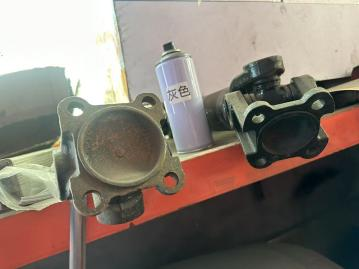
1. The Role of the Driveshaft in Rough Terrain Forklifts
In a rough terrain forklift, the driveshaft isn’t just a mechanical link—it’s a critical component that:
- Transfers power from the engine and gearbox to the axles
- Withstands heavy loads, shock impacts, and vibrations
- Ensures smooth and reliable traction in off-road conditions
That’s why the design and build quality of the driveshaft can make or break long-term performance.
2. Landtiger35: Thicker, Stronger, Longer-Lasting
The Landtiger35 features a significantly more robust driveshaft, with:
- Thicker tubing and splines for better torsional strength
- Reinforced universal joints for enhanced durability under rough use
- Higher-quality materials that resist fatigue and cracking over time
This stronger construction allows it to reliably transfer higher torque from the engine and transmission—even on steep slopes, mud, or construction debris.
3. T35: Lightweight Shaft, Limited Lifespan
On the other hand, budget forklifts like T35 typically use:
- Thinner, lightweight driveshafts
- Lower-grade U-joints
- Less attention to dynamic balancing and stress testing
These components might work for light-duty applications, but they are more likely to:
- Wear out quickly
- Break under heavy or shock loads
- Transfer less torque efficiently
4. Better Torque Handling = Better Performance
A better driveshaft means:
- More consistent torque to the wheels
- Fewer breakdowns in harsh environments
- Longer working hours without downtime
For customers in construction, mining, agriculture, or hilly terrain, this difference becomes a major factor in cost of ownership.
Conclusion:
When it comes to powering through challenging environments, the Landtiger35’s driveshaft is built for the job. Its superior strength and durability ensure that power delivery is stable, efficient, and long-lasting—far beyond what cheaper forklifts can offer.